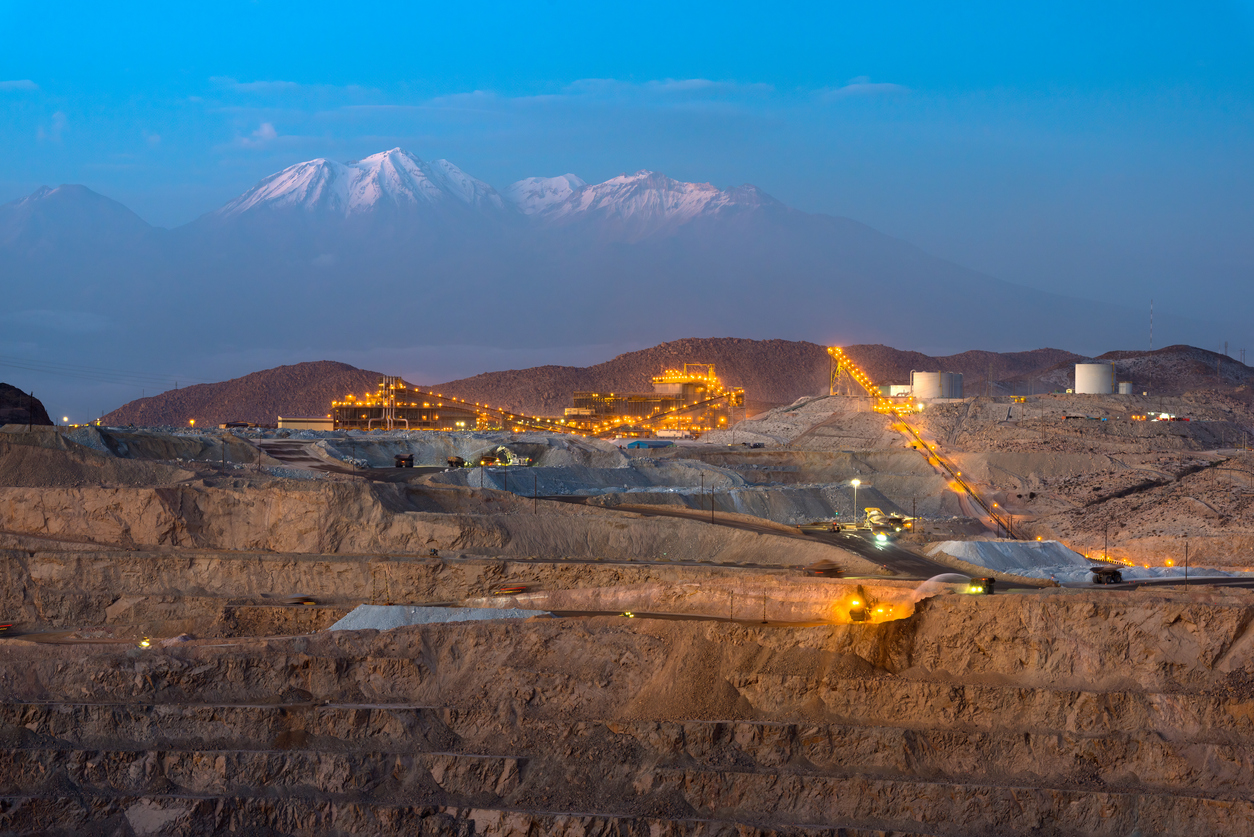
Freeport McMoran Inc. (NYSE:FCX) produced less copper than expected from its mines in the Americas in the last quarter, heightening concerns about a tight global market where prices have soared to record levels. Freeport produced 987 million pounds of the metal in the third quarter, the company said in a statement on Thursday, with production falling below Bloomberg analysts’ average estimate of 1 billion pounds. The slowdown was driven by lower-than-expected output at its mines in South America.
The stock has more than doubled in the last year, becoming one of the best performers among copper suppliers tracked by Bloomberg Intelligence. The production shortage at Freeport comes after the company posted a quarterly profit that beat analyst estimates as higher copper prices helped lift sales and operating profit to levels last seen in the same quarter a year ago. Adjusted earnings of 89 cents per share topped the average estimate of 82 cents. Freeport estimates that annual copper sales are 3.8 billion pounds this year, following sales of 1.03 billion pounds in July and September. Net cash costs for Freeport were $1.24 per pound in the third quarter, well above the average analyst estimate of $1.30 per pound. Rising costs are seen as one of the few headwinds to earnings growth for the copper mining giant.
Freeport’s results will be particularly interesting for traders navigating the wild swings in copper prices, with available stocks on the London Metal Exchange at their lowest level since 1974. The market had been banking on Freeport to ramp up underground production. The company said underground progress at its flagship Grasberg mine was progressing on schedule. While companies are moving quickly to bring more copper to market, growth in demand is seen to be outstripping supply over the next decade, with new projects needed to help balance the dynamic.
Global shipping bottlenecks and energy bottlenecks in China and Europe have clouded the demand outlook for the coming year. But the immediate outlook for copper, supported by lower inventories and a shift to low-carbon energy sources, is rosier in the longer term. Efforts to save electricity in China and to limit emissions have been a double-edged sword for mining companies with higher smelting fees wiping out some of the windfall.
The China Conundrum
Coal provides much of the country’s electricity, but a combination of factors has recently led to electricity shortages. China’s coal production in 2021 will be unable to keep pace with rising electricity demand due to tighter safety regulations and an additional focus on environmental issues in Beijing, tight global coal markets, rising prices, and other factors, including weather delays. China is working out of a coal-fired power crisis that has sent shockwaves through its economy, but efforts to move to a low-carbon future are bringing additional risks to the country’s supply-demand balance. The shift has been too great, too fast, and the country is having trouble balancing its power needs with generating sufficient electricity using cleaner fuels.
Copper is one of the desperately needed metals for that clean energy transition. It is used for energy storage which is critical to use with renewables that are not able to generate electricity consistently. China is and will be one of the biggest copper consumers in the coming years, and will contribute to how fast demand will be driven.
Solar power can only be generated for a certain period, and when the night sets in, countries will need to draw power from the excess generated and stored in batteries. The lithium-ion batteries used to store large amounts of power require copper to be manufactured, and copper is the primary material for electricity transportation as well. To get the electricity from the generation site to the storage site, copper wiring will be used. More will be necessary to deliver that electricity to homes and offices and the factories that need to keep running almost constantly.
As China tries to shift to renewable energy, a severe drought has hit hydropower, especially in central Yunnan province. According to the National Development and Reform Commission, the water production in July and August fell by more than 4% year-on-year. Freeport’s production miss is significant because the producer accounts for so much of the global production, but the copper market remains strong. If anything, the lower production may only contribute to the supply crunch and rising copper prices.



 Follow us on Twitter
Follow us on Twitter Become our facebook fan
Become our facebook fan










Comments are closed.